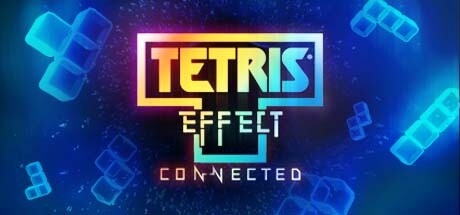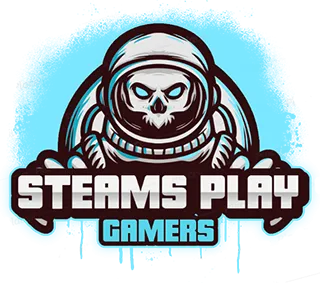
Tetris® Effect: Connected Self Revive Tutorial Guide in Tetris
Introduction
Tetris® Effect: Connected brings a fresh twist to the beloved classic by introducing a cooperative multiplayer mode where players team up to tackle challenging bosses. In this high-stakes environment, one crucial skill can make or break your game: the ability to revive yourself and your teammates when knocked out. This comprehensive guide will walk you through the self-revive process, ensuring you stay in the game and continue supporting your team through thick and thin.
Quick Answer
To self-revive in Tetris® Effect: Connected, press any rotate button in sync with the shrinking circle around your avatar after being knocked out. Successful timing fills your revive bar, while teammates clearing lines speeds up the process.
Understanding the Self-Revive Mechanic
In the Connected mode of Tetris® Effect, self-revival is a game-changing feature during intense boss battles. When you or a teammate gets knocked out, the game offers a lifeline – a chance to bounce back and rejoin the fray. This mechanic not only keeps the gameplay exciting but also reinforces the cooperative nature of the mode.
The Importance of Self-Revival
Self-revival isn’t just about keeping yourself in the game; it’s a crucial aspect of team strategy. A knocked-out player can’t contribute to the team effort, so mastering this skill ensures your team maintains its full strength throughout the battle. It’s the difference between a narrow defeat and a triumphant victory.
Step-by-Step Self-Revive Process
-
Get Knocked Out
The self-revive journey begins when you’re knocked out. This typically happens when your playfield fills up to the top, usually due to relentless boss attacks. Don’t panic – this is where the real challenge begins!
-
Follow the Rhythm
Once knocked out, you’ll notice a circle approaching your avatar on the screen. Think of this as a mini rhythm game within Tetris. Your goal is to press any rotate button in sync with the rhythm as the circle shrinks. If you nail the timing, you’ll hear a satisfying clap sound. Each successful hit fills your revive bar from bottom to top.
-
Team Contributions
Your allies play a crucial role in your revival. As they clear lines, especially with impressive moves like Tetrises or T-spins, they significantly boost your revive progress. This teamwork aspect adds an extra layer of strategy to the game, as players must balance their own gameplay with supporting knocked-out teammates.
-
Watch for the Brightness
As your revive bar fills up, you’ll notice your board getting brighter. This visual cue indicates you’re close to rejoining the battle. Once the bar is full, you’re back in action and ready to face the boss again with renewed determination.
Tips for Effective Self-Reviving
-
Stay Calm and Focused
It’s easy to get flustered when you’re knocked out, especially in the heat of a boss battle. Take a deep breath, focus on the rhythm, and press the buttons calmly. Remember, panic is your worst enemy in these situations.
-
Communicate with Your Team
Good communication can make or break your revival chances. Let your teammates know when you’re knocked out so they can focus on clearing lines to help you revive faster. A simple “I’m out!” can prompt your team to shift their strategy and get you back in the game quickly.
-
Practice the Rhythm
The revive mechanism is all about rhythm. The more you practice, the better you’ll get at timing your button presses perfectly. Consider spending some time in practice mode to hone this skill without the pressure of a real boss battle.
-
Learn from Each Knockout
Every time you get knocked out is a learning opportunity. Pay attention to what led to your knockout and how you can avoid it in the future. This reflective approach will improve both your overall gameplay and your revival skills.
My First Self-Revive Experience: A Personal Anecdote
I’ll never forget my first self-revive experience in Tetris® Effect: Connected. It was during a particularly grueling boss battle, and I had just filled up my board, my heart sinking as I realized I was out of the game. The sudden shift to the revive mode caught me off guard – the pulsing circle, the rhythmic beats, it was all new and a bit overwhelming.
At first, I fumbled, missing a few beats and feeling the pressure mount. But then, something clicked. I started to feel the rhythm, my fingers syncing with the shrinking circle. With each correct hit, I heard that satisfying clap, and I could see my revive bar filling up. It was like a dance, a perfect blend of focus and instinct.
What really struck me was how my teammates stepped up. They were clearing lines left and right, and I could see my revive bar filling faster than I thought possible. It was a beautiful moment of teamwork – me focusing on my rhythm, them clearing the way for my return.
Just when I thought the boss might overwhelm my team, I made it back into the game. The rush of rejoining the battle, picking up right where I left off, was exhilarating. We went on to win that round, and I realized that self-revive wasn’t just a mechanic – it was a crucial part of the game’s strategy and teamwork.
That experience taught me the importance of staying calm under pressure, the power of teamwork, and how even when you’re knocked down, you’re never truly out of the game. It’s a lesson I carry with me in every Tetris® Effect: Connected session, and it’s made me a better, more resilient player.
Advanced Self-Revive Strategies
Timing is Everything
As you get more comfortable with the self-revive mechanic, you’ll start to notice subtle cues that can help you perfect your timing. The visual shrinking of the circle is your primary guide, but don’t neglect the auditory cues. The game’s soundtrack often aligns with the revival rhythm, giving you an extra sensory input to nail that perfect timing.
Team Coordination for Faster Revivals
In high-level play, teams often develop strategies to speed up the revival process. For example, one player might focus on setting up Tetrises or T-spins, while another clears lines consistently. This coordinated approach can bring a knocked-out player back into the game in record time, maintaining the team’s momentum.
The Psychology of Self-Revival
Self-revival in Tetris® Effect: Connected isn’t just about button presses and timing – it’s a mental game too. Being knocked out can be disheartening, but viewing it as a temporary setback rather than a failure is crucial. This positive mindset can make a huge difference in your revival speed and your performance once you’re back in the game.
Conclusion: Mastering the Art of Self-Revival
Mastering the self-revive technique in Tetris® Effect: Connected is more than just a useful skill – it’s an essential part of becoming a well-rounded player. It combines rhythm, focus, teamwork, and mental resilience, all of which are valuable both in the game and beyond.
Remember, every knockout is an opportunity to practice and improve. With time and dedication, you’ll find yourself reviving faster, contributing more to your team, and enjoying the game at a whole new level. So the next time you see that revival circle, don’t dread it – embrace it as a chance to show your skill and support your team.
Keep practicing, stay positive, and most importantly, have fun! After all, that’s what Tetris® Effect: Connected is all about – bringing players together for an unforgettable, cooperative experience. Happy stacking, and may your revivals be swift and your victories sweet!

Leave a Reply